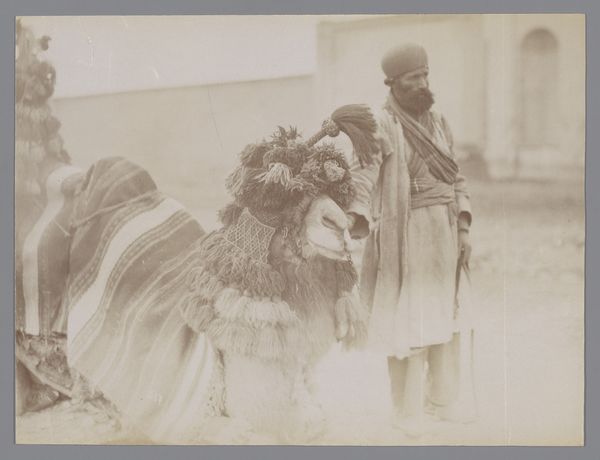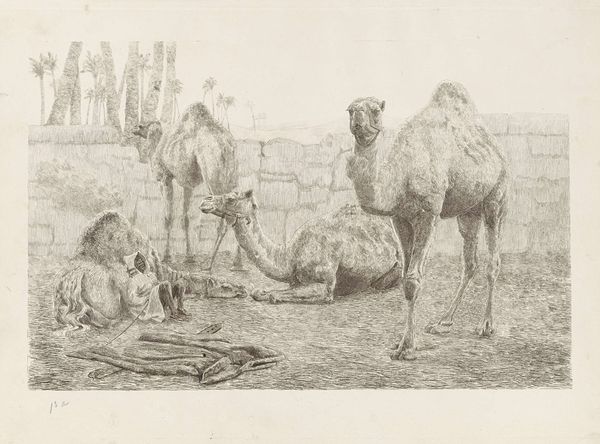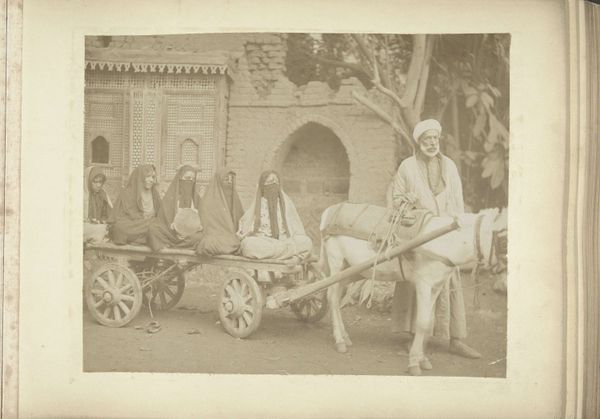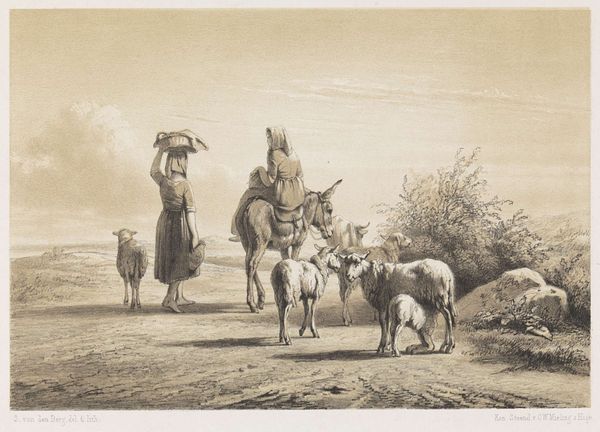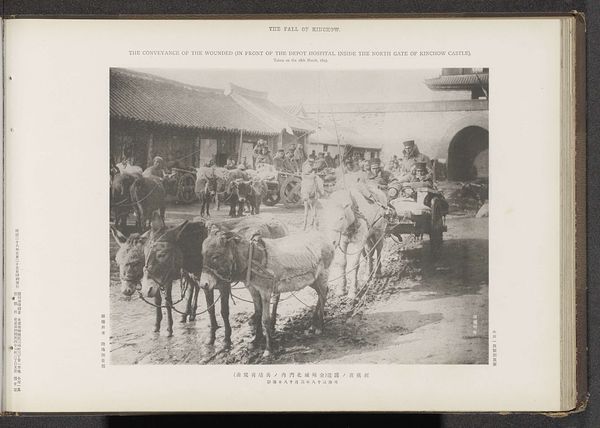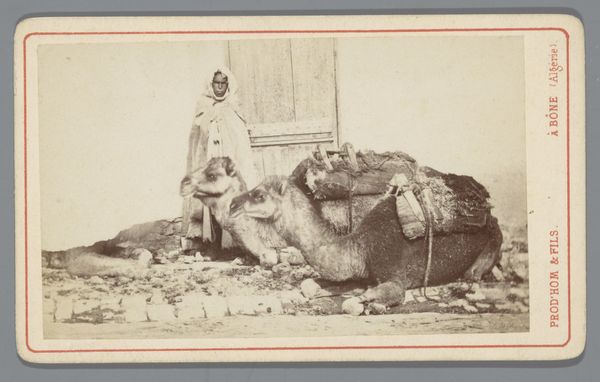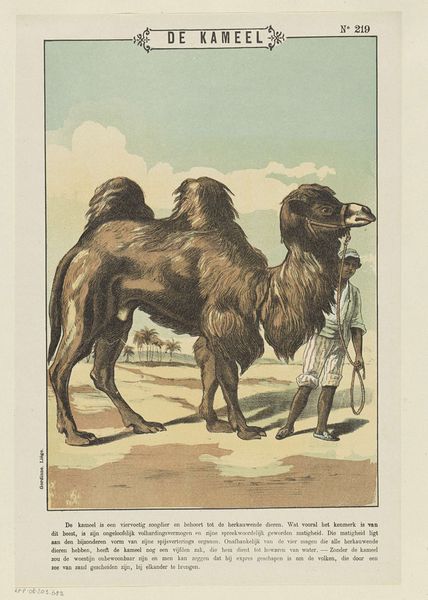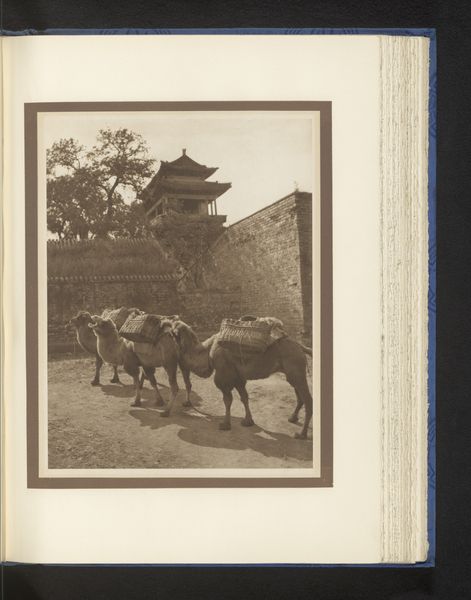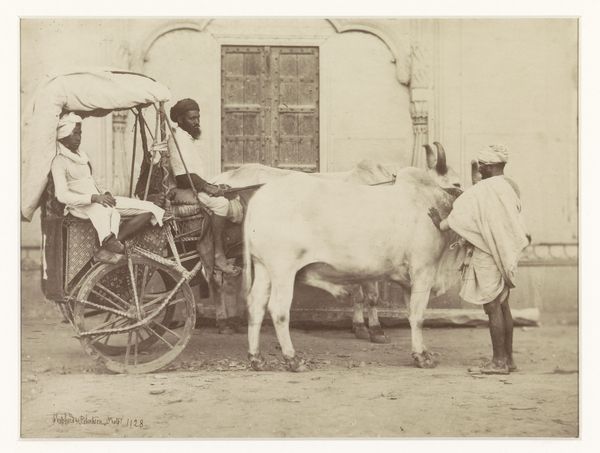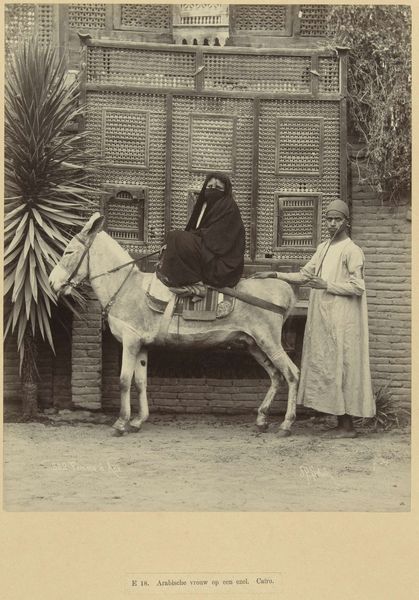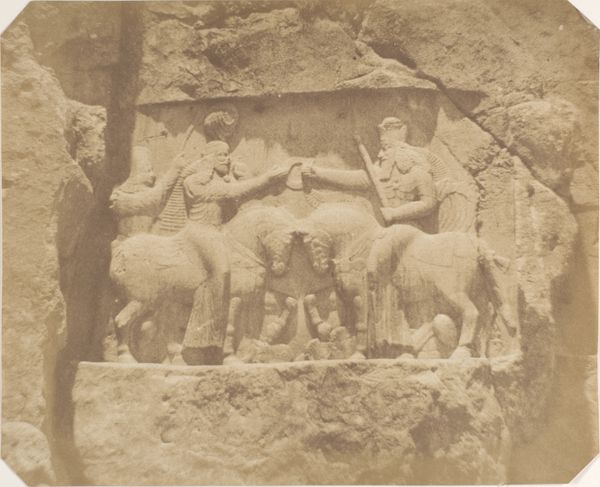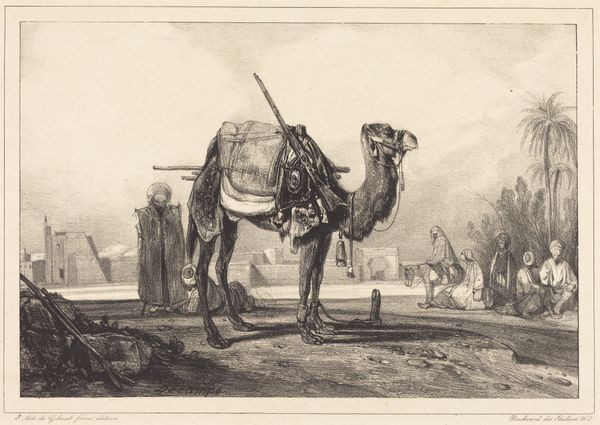
photography
#
portrait
#
asian-art
#
street-photography
#
photography
Copyright: Public Domain
Curator: Before us is "Pekin. No. 923," a photograph captured by Lai Fong in 1867. Editor: There's a stillness here, despite the bustling street implied by the title. The light gives everything a soft, sepia tone. The texture of the camel's fur looks so tactile! Curator: Fong was a pioneering photographer based in Hong Kong. What's significant is that his studio documented a wide range of subjects, from landscapes to portraits. However, he situated much of his work within the visual vocabulary understood by Europeans at the time, but as an Asian man operating under imperialism. Editor: So, it’s important to remember the photograph as not only the creation of a person, but also created within specific social systems? The photograph becomes a form of labor and material for exchange? Curator: Precisely. Let’s consider this scene. The composition, for instance. We see the camel, saddled and ready for transport, likely intended to capture a scene of exotic ‘daily life,’ through a Westernized gaze. This photograph exists as part of an early era of cultural documentation under an uneven system. Editor: Yes, the context really complicates things. It’s interesting how photography, a relatively new technology, became such a potent tool for representation and the shaping of cultural perceptions. I keep thinking of the camel itself, it’s an interesting commodity here, so laden. What would it carry; who would be impacted? It becomes almost anthropomorphic. Curator: I agree, considering the layered narrative embedded into these photographic techniques—Fong allows a certain representation to come to fruition as well, considering the audience for the photography studio and their preferences in documenting what would be 'important' or 'of value' when understanding foreign culture. Editor: Understanding the complex interplay of social exchange is essential when experiencing art of the past. Curator: Yes, and by bringing these intersectional layers of thought into consideration when experiencing this photography and photographs such as it, our understandings become much more rounded.
Comments
No comments
Be the first to comment and join the conversation on the ultimate creative platform.
